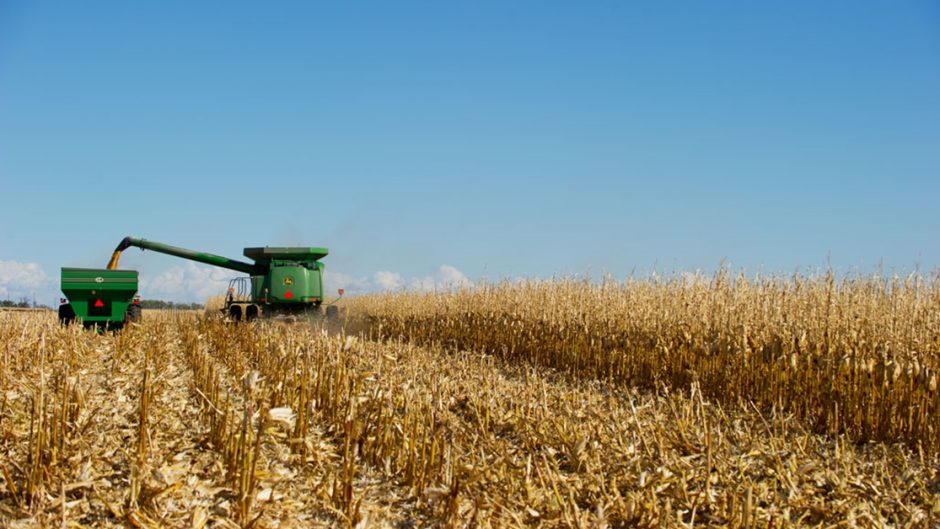A tweaked yeast can make ethanol from cornstalks and a harvest’s other leftovers
A tweaked yeast can make ethanol from cornstalks and a harvest’s other leftovers
The process could tap underused sources of renewable fuels
When corn farmers harvest their crop, they frequently leave the spent cobs, spent leaves, and stalks in the fields to rot. Engineers have now created a novel yeast strain that can transform this unusable waste into ethanol, a biofuel. This relatively untapped renewable energy source could help lessen dependency on fossil fuels if the procedure can be scaled up.
Previous attempts to turn this fibrous substance, known as maize stover, into fuel were only partially successful. Corn stover must be broken down before yeasts can do their function, but this process frequently produces by-products that kill yeasts. However, by altering a gene in common baker’s yeast, scientists have created a strain that can neutralize those lethal by-products and continue to convert sugar into ethanol.
The researchers report their findings in Science Advances on June 25. The novel yeast was able to produce nearly 100 grams of ethanol for every liter of treated corn stover, an efficiency comparable to the traditional procedure using maize kernels to make the biofuel.
According to Venkatesh Balan, a chemical engineer at the University of Houston who was not involved in the study, “They’ve generated a more hardy yeast.” According to him, the novel strain could be useful for biofuel producers who are trying to use resources like corn stover.
Subscribe to Science News for the Latest News headlines and summaries of the most recent Science News stories sent directly to your email
The majority of the ethanol produced in the United States is blended into the majority of the gasoline sold at petrol stations. Corn is the nation’s largest crop. Although it is a green energy source, corn ethanol has several drawbacks. Expanding cropland only to plant corn for biofuel clears natural habitats, and diverting corn for ethanol production can reduce the amount of food available (SN: 12/21/20). Without needing to grow more crops, the supply of biofuel might be increased by turning inedible corn stover into ethanol.
According to MIT metabolic engineer Felix Lam, corn cannot really take the place of petroleum as a fuel’s primary basic source. But we do have a choice.
With Saccharomyces cerevisiae, or common baker’s yeast, Lam and associates began. Producers of biofuel already employ yeast, just like sourdough bakers and brewers: It can produce ethanol from the carbohydrates found in corn kernels (SN: 9/19/17).
Contrary to maize kernels, which have sugars that are easy to access, corn stover has sugars that are locked in lignocellulose, a plant substance that yeast cannot degrade. These sugars can be liberated by using strong acids, but doing so produces toxic byproducts called aldehydes that can be lethal to yeast.
However, Lam’s team had an idea: turn the aldehydes into something yeast could tolerate. The scientists previously knew that they could increase the yeast’s tolerance to alcohol, which is equally hazardous at high doses, by modifying the chemistry of the environment in which it grows. In light of this, Lam and colleagues focused on the GRE2 yeast gene, which aids in the conversion of aldehydes to alcohol. A total of 20,000 yeast strains with various genetically altered versions of GRE2 were produced at random by the scientists. Then, to determine which yeasts would survive, the researchers put the swarm of variations inside a flask that also contained harmful aldehydes.
Multiple versions survived the gauntlet, but one dominated. The researchers discovered that the altered baker’s yeast could create ethanol from treated corn stover virtually as efficiently as from maize kernels using this tried-and-true variant of GRE2. Additionally, switchgrass and other woody materials like wheat straw might also be converted into ethanol by the yeast (SN: 1/14/14). We have one strain that can do all of this, says Lam.
According to Balan, this strain eliminates a significant problem in the fermentation of ethanol from fibrous materials like corn stover. However, he continues, “there are many more improvements that will have to happen to make this technique commercially feasible,” such as logistical difficulties in harvesting, transporting, and storing significant amounts of maize stover.
Lam admits that there are numerous moving aspects to the issue. However, he believes that the discoveries made by his team could help launch a “renewable pipeline” that uses underutilized sustainable fuel sources. He claims that the goal is to overthrow fossil fuel dominance.



